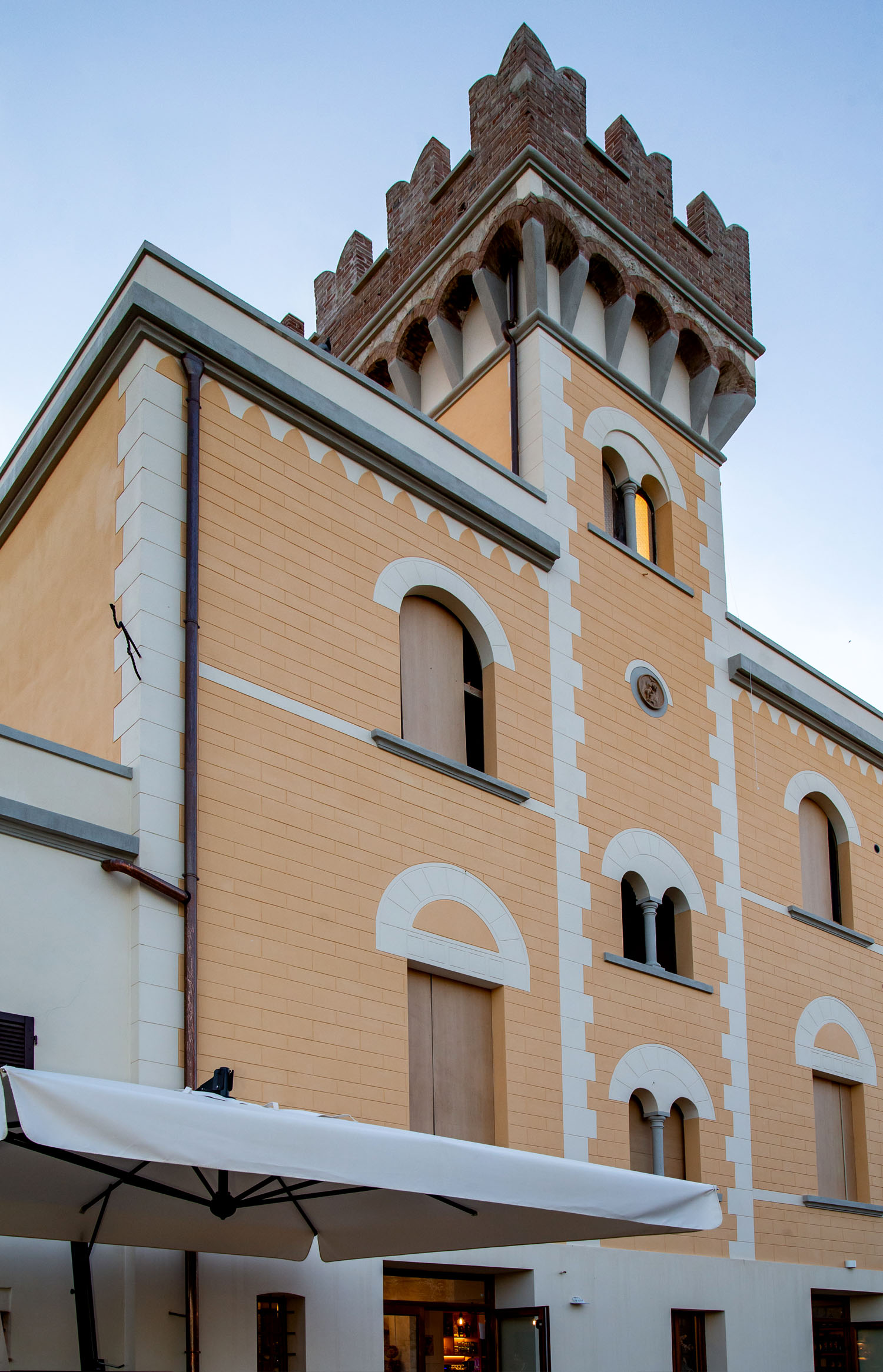
IL CASTELLETTO SHINES AGAIN
The brothers Gabriele and Gian Nicola Pecchi bought, in 2019, a property in Colle Val d’Elsa, very well known to all Colligiani: the “Villino Napoleone”, that is the early twentieth century building with the turret, which is located outside Porta Salis Porta Nova.
The property was in a state of total decay rather unfortunate for the city of Colle, now it has been the subject of a massive conservative restoration, which aims to bring it back to its ancient splendor.
The Castelletto di Napoleone Bertini is a building of historical and artistic interest notified to the Superintendence, since it is a structure that constitutes an interesting example of eclectic architecture of the early twentieth century, the only neo-medieval or neo-Gothic style building in the whole area.
The building is located in the area of Colle Alta that faced, in the early 1900s, an important urban expansion. It reflects the typology of a “Neo-medieval castle” according to the eclectic cultural current of the time, devoted to the recreation of the styles of the past.



It was built in the 1920s by the Brothers Corti Building Company of Corti Archimede di Colle, commissioned by Cav. Napoleone Bertini, owner of an industry specializing in iron forging, the “Giovan Gastone Bertini”, one of the most important entrepreneurs of the industrial miracle of Colle at the beginning of the century. The only certain date we have on the ending of the construction of the building is an article of La Nazione of 1927 in which it appears, completed in a black and white picture, and listed among the most important works built by the firm of Corti Archimede.
The turret has a dovetail-battlements supported by overhanging arches as opposed to the square battlements of the facing Portanova. The Porta Salis remains the reference structure and aesthetic inspiration, testimony of this are the repeated motifs of the pointed arch typical and characterizing the San Gallo gate, as if to signify an indissoluble couple between the two monuments.
Inside there are various wrought iron chandeliers and stucco decorations, two typical examples of the manufacturing excellence of the time in Colle. It is an example of the industrial civilization of Colle in the first half of the 1900s, as indeed Palazzo Masson had been about half a century earlier


